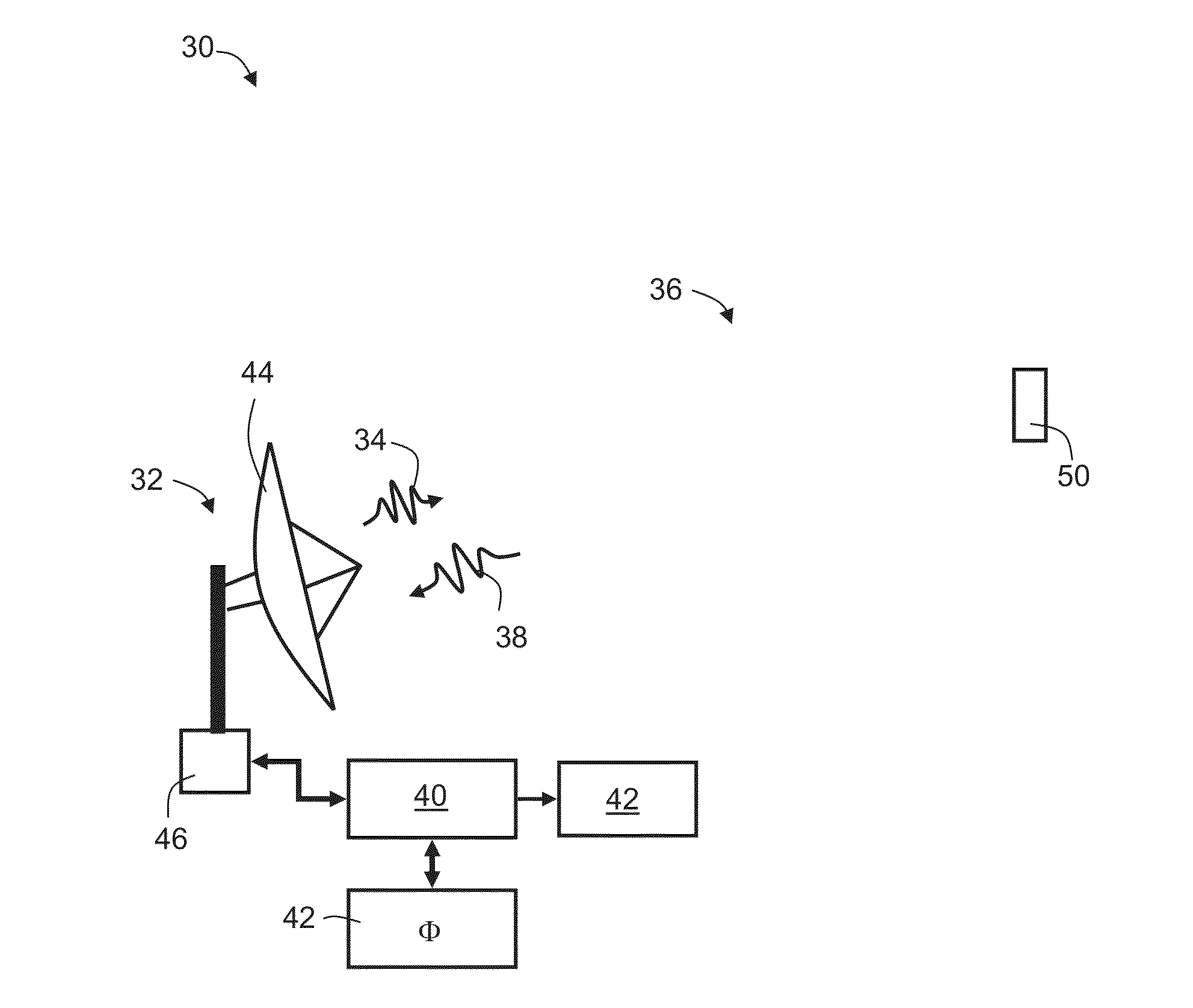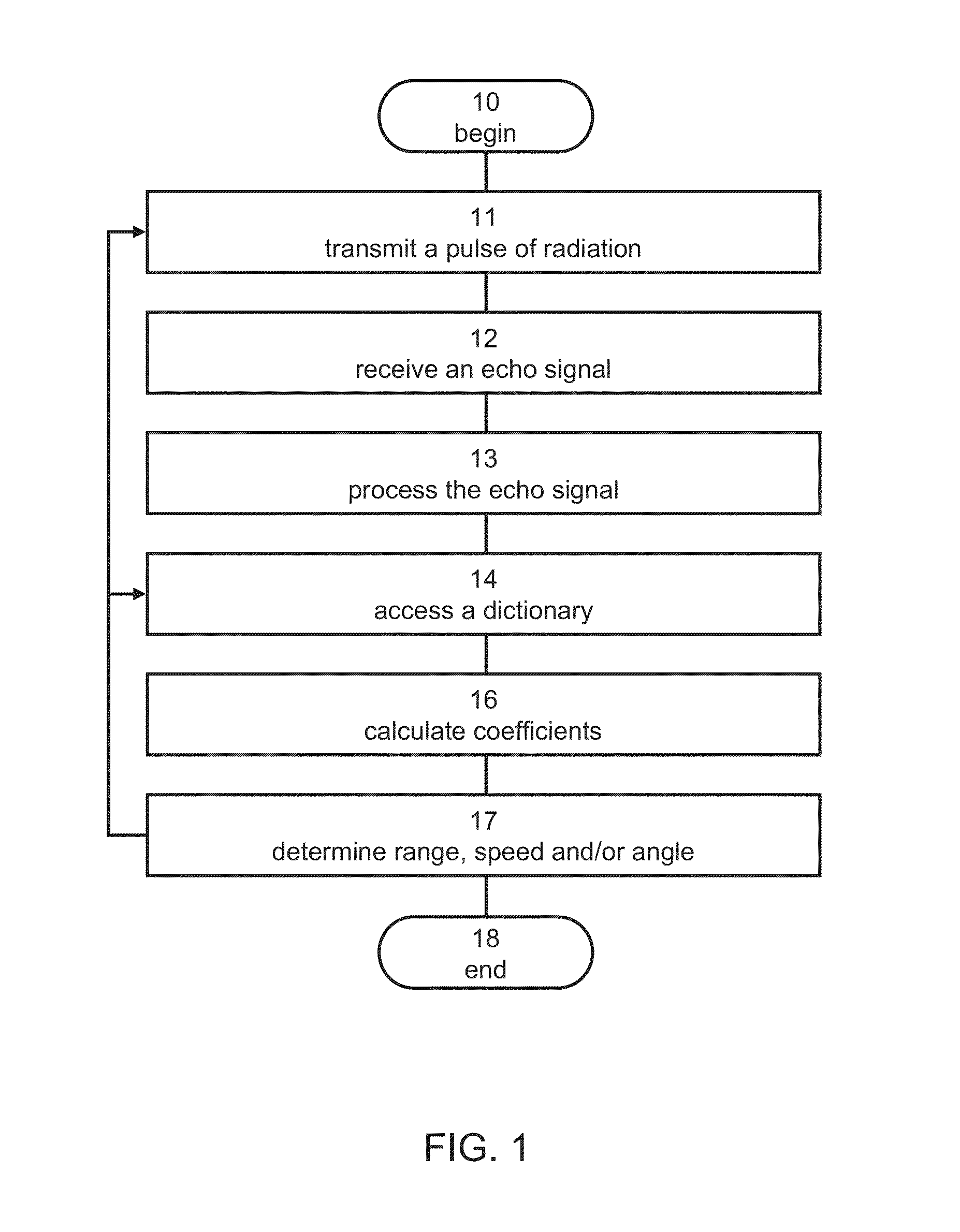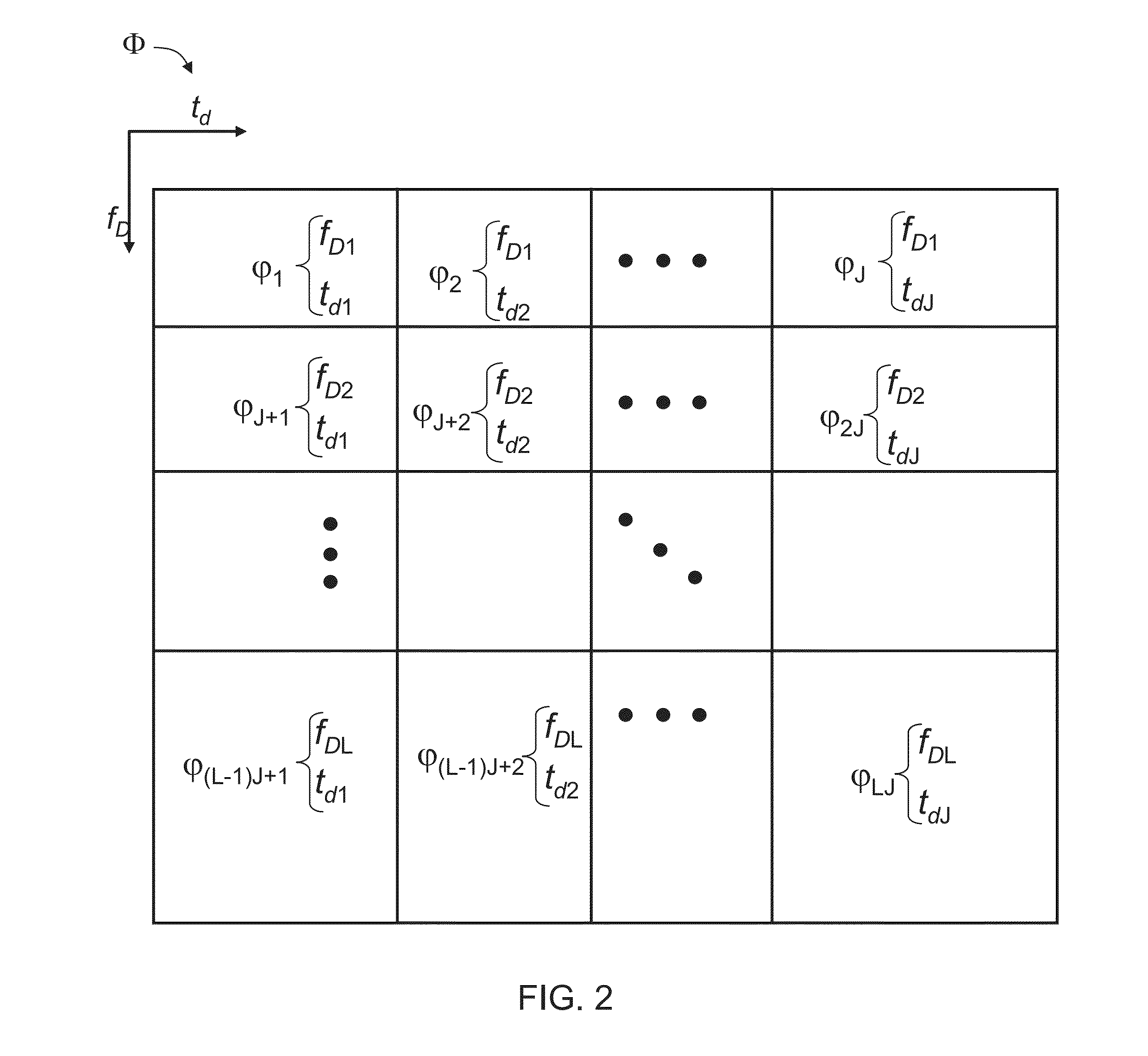Method and system for target detection
a target detection and target technology, applied in the field of target detection, can solve the problems of constructive and destructive waves, limited time period for irradiating a target with transmission radio waves, and limited amplitude and phase of the wav
- Summary
- Abstract
- Description
- Claims
- Application Information
AI Technical Summary
Benefits of technology
Problems solved by technology
Method used
Image
Examples
example 1
Theoretical and Practical Considerations
[0165]Radar signals are typically, but not necessarily, narrow bandpass signals. A general form of a transmitted waveform in a conventional radar system contains amplitude and frequency modulation, and can be written as:
x(t)=Ata(t)cos [ω0t+θ(t)], (1)
where At is a constant amplitude, a(t) is the amplitude modulation (in this example, an on-off pulse is considered) of duration tp, ω0 is the angular frequency of the waveform, and θ(0 is the phase modulation term. Without loss of generality, it is assumed that a(t) has unit amplitude. The received signal from a point target moving in a constant velocity at radial direction is:
{circumflex over (r)}(t)=Ara(t−td)cos [(ωo+ωD)(t−td)+θ(t−td)+φ0] (2)
where Ar is the received amplitude, φ0 is a random phase, td is the time delay of the received signal relative to the transmission time of the waveform, so that the corresponding range is R=ctd / 2. Due to the Doppler affect, the frequency is shifted by ωD, w...
example 2
Exemplary Target Detection
[0188]In this Example, a range and Doppler processing technique of a sparse echo signal is used for target detection according to some embodiments of the present invention.
[0189]The transmitted waveform in the present Example is a rectangular pulse, with duration tp and without frequency or phase modulation. Such pulse can be written as:
x(t)=a(t)cos(2πf0t), (9)
where
a(t)=rect(ttp)={1,0≤t≤tp;0,elsewhere.
[0190]FIG. 4B is a schematic illustration of a block diagram of a radar receiver which can be used according to the embodiments of the invention described in the present example. The receiver is similar to the receiver shown in FIG. 4, except that since Fourier transform is not employed, the conversion to base-band is not required and therefore the receiver does not include a digital down-converter.
[0191]The number of point targets from which the echo signal is received is denoted K. The echo signal prior to the digitization can be written as:
y(t)=∑k∈I{αka(t-...
PUM
 Login to View More
Login to View More Abstract
Description
Claims
Application Information
 Login to View More
Login to View More - R&D
- Intellectual Property
- Life Sciences
- Materials
- Tech Scout
- Unparalleled Data Quality
- Higher Quality Content
- 60% Fewer Hallucinations
Browse by: Latest US Patents, China's latest patents, Technical Efficacy Thesaurus, Application Domain, Technology Topic, Popular Technical Reports.
© 2025 PatSnap. All rights reserved.Legal|Privacy policy|Modern Slavery Act Transparency Statement|Sitemap|About US| Contact US: help@patsnap.com



